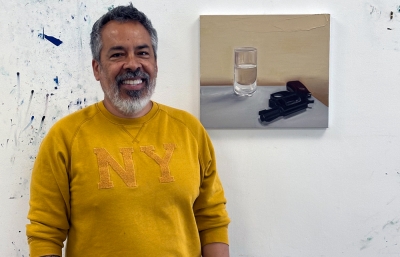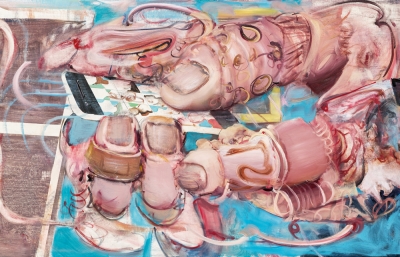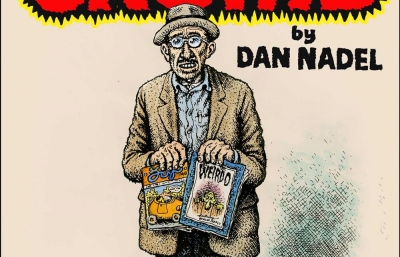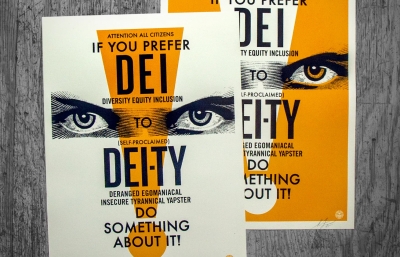For a studio, it's important to have windows, space to work on more than one work at a time, and room for books. Fortunately, our studio has them all! I wouldn't mind having some more walls to hang pieces, but you can't have everything. We moved into the studio just as we went into lockdown, around May 2020. Who knows what could happen in the future? But, at the moment, I am really happy in this one, and it does feel like home. I share the space with friends, and have indeed been very lucky in that sense. Apart from sharing all the issues related to painting, we have been able to gather to have a drink, watch films and football games, and overcome the loneliness of the Covid situation.
The studio is in San Sebastián, in a neighbourhood called Egia. It has traditionally been a workers’ district, but at the same time, there are some artist studios around. I can't think of many galleries, but there is a cultural center called Tabakalera. It has a film school where they organize some art exhibitions, though they tend to be more focused on new media and installations than paintings. If I had to pick the essentials to have in my studio, I would say: Speakers or headphones for music and podcasts, studiomates for sharing everyday creative issues, and a surfboard. We are fifteen minutes from the sea, so it’s great to disconnect and return to work all refreshed.
I started, during lockdown, my next solar show in London. Right before, I had done a trip to Sarajevo just to take pictures, so that was lucky. In summer 2020, I also traveled to Poland with my girlfriend. We live in Spain, but she is from Wrocław. Those two trips have been the main source of inspiration, but they are always combined with the folders I‘ve collected over the years. I usually work inspired by the photos I take during my trips. However, in this show, there is a bigger presence of paintings based on previous collages in which I mix different situations in one image. I guess this process leads to a bigger feeling of strange spaces that you can´t find in reality.
In my last show, States of Transition, there was a bit of this already, but here I've gone a bit further with that. By working more freely with the references, I somehow came up with more ambiguous landscapes that seem to be frozen at some point between the past and future. This is something that I already feel when I visit post-socialist cities, due to the economic changes they suffered during the early 1990s. Through this process of image manipulation, I´ve tried to evolve these atmospheres a bit. In terms of size, I´ve done some bigger pieces, trying to make more evident the enormity of the architecture. At the same time, there are some very small ones. This is due to lockdown, when I was forced to look for new subjects that would work in a smaller format. Lastly, I would point out a recent shift in research to include cloudy grey atmospheres I haven’t explored that much in the past. —Sebas Velasco
Sebas Velasco has an upcoming solo show in London in October, 2021.














